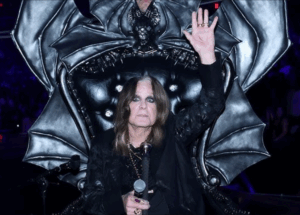The Only Track to Outsell The Beatles in 1966

via The Beatles / YouTube
Pop Culture in 1966: More Complex Than It Seemed
People often think of the 1960s as a decade shaped by peace, protests, and colorful music. From the outside, it looked like hippies were leading the way. But in reality, they were just a small part of the population. While The Beatles pushed creative limits with Revolver in 1966, not everyone liked it.
The black-and-white cover of Revolver matched the growing tension of the time. The Vietnam War was getting worse, and people’s emotions were rising. Still, most Americans supported their government’s actions. A surprising sign of this came in the form of one song—one that ended up outselling even The Beatles that year.
View this post on Instagram
Barry Sadler: Before the Uniform
Barry Sadler, the man behind that hit song, didn’t always look like a soldier. He grew up in New Mexico, dropped out of high school, and played in small southern bars trying to earn a living as a musician. At that point, he had little in common with the clean-cut military image he would later represent.
Sadler himself later admitted he was “going nowhere.” Looking for a purpose, he made the same decision many young men did back then—he joined the military. Unlike some others, like Jimi Hendrix who also served briefly, Sadler became a highly trained Green Beret. He was later sent to Vietnam as part of the elite force.
Wounded in War, Called Back Home
Sadler’s time in Vietnam ended when he was hurt by a punji stick trap. These traps, made of sharpened spikes often coated in poison or waste, were hidden in the jungle and meant to wound or disable soldiers. After being injured, he was sent back to the United States.
Even though his combat service ended, Sadler’s work with the military wasn’t over. He had a strong look, stood with perfect posture, and had the face of a trusted soldier. Because of this, he was asked to pose for the cover of the 1965 book The Green Berets by Robin Moore.
View this post on Instagram
From Poster Soldier to Music Star
Robin Moore had connections in the world of media. After learning that Sadler also wrote songs, Moore saw a new opportunity. During that time, many artists were singing about peace and protesting the war. But Moore believed that there was also a large group of people who supported the war—and those people weren’t being represented in music.
So Moore took one of Sadler’s songs, made it more formal and proud, and matched it to Sadler’s new public image. The picture of Sadler on the book cover showed a serious, confident soldier. Though Sadler was reportedly “half-bombed” during the photo shoot, the public saw him as a symbol of honor. Moore and RCA Records knew this would appeal to the other side of the public.
The Release of “The Ballad of the Green Berets”
The song was recorded quickly over Christmas in 1965. RCA moved fast, getting approval from the Pentagon to use the photo of Sadler in uniform. It’s possible they wanted more than just legal permission—they may have wanted government support as well.
When the song came out, it hit a nerve. At a time when the media often focused on anti-war voices, “The Ballad of the Green Berets” spoke to those who felt proud of the military. It offered a sharp contrast to the peace songs that dominated college campuses. The song took off quickly. Even actor John Wayne bought the rights to The Green Berets and turned it into a film.
Sadler’s Short-Lived Fame
While the song was a huge success—it became the best-selling single in America in 1966 and even outsold The Beatles—Sadler’s music career didn’t last. His album and follow-up songs didn’t do nearly as well. The public had made their point through that one hit, and they didn’t keep buying.
Afterward, Sadler went back to drifting. He became involved in a deadly argument with another country singer, Lee Emerson Bellamy, over a shared girlfriend. Sadler shot Bellamy in the head and was sent to prison, but he served only a few years.
The Final Chapter in Sadler’s Life
Sadler later got into more legal trouble. Eventually, he left the country and worked with rebels in Guatemala. In 1988, he was shot in the head under unclear circumstances. Although he survived the shooting, complications from the injury led to his death in 1989. He was just 49 years old.
Though Sadler didn’t have a long music career, his single moment of fame left a unique mark on American pop culture. While he “won the battle” in 1966 by beating The Beatles in sales, the rest of the decade belonged to the artists who shaped culture in other ways.













